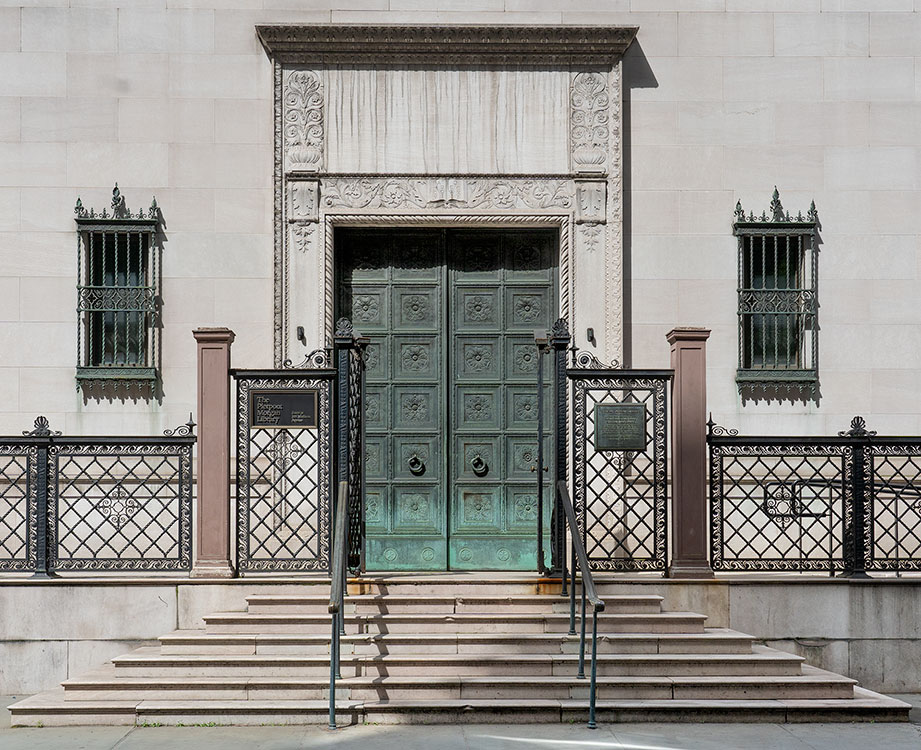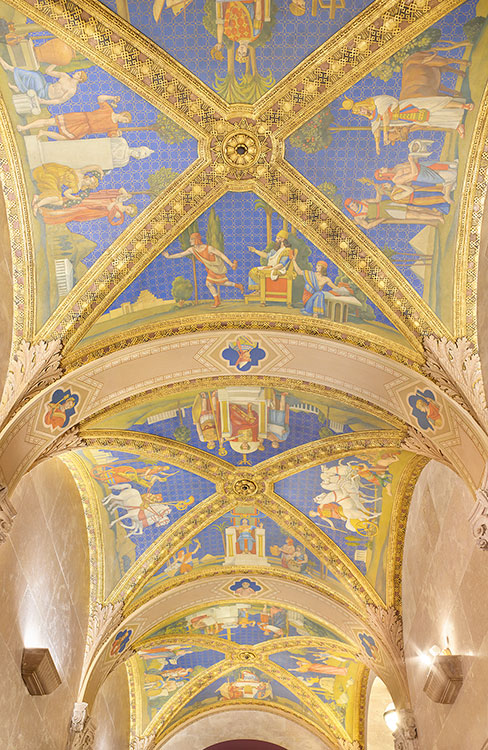Stop 44. The Annex

When Pierpont Morgan died in 1913, he left his vast collections as well as the magnificent library he built next door to his home to his son, J. P. Morgan, Jr., who was known as Jack. The younger Morgan gave many of the works of art to the Metropolitan Museum of Art and the Wadsworth Atheneum, in Hartford, Connecticut. He kept the books, manuscripts, drawings, and prints, among other collections, and formed a public institution to make these collections available.
In 1924, following his mother’s death, Jack Morgan commissioned the Annex, a building containing space for exhibitions and scholarly research on the site of his parents’ home, adjacent to the original Library. He hired the architect Benjamin Wistar Morris to design it. Morris took his cues from the Charles Follen McKim building next door but did not try to compete with McKim’s Renaissance-style palace. A long narrow gallery connected the two buildings, where the modern Clare Eddy Thaw Gallery is today.
The project took four years, and the Morgan opened its doors as a public institution in October 1928.
Stop 45. Inside the Annex: Yellin and Mowbray

Jennifer Tonkovich, Eugene and Clare Thaw Curator of Drawings and Prints
The Marble Hall served as the entrance to the Morgan Library from 1928 until 2003. Two galleries flank the hall. Originally, one was for exhibitions and the other was a scholars’ reading room. Today, both are exhibition galleries—the reading room is now on the third floor of the central pavilion designed by Renzo Piano, where it is open to researchers by appointment.
The ceiling in this space is characterized by decorative ironwork. Created by the prominent Philadelphia blacksmith Samuel Yellin, it features nearly 650 birds—each one unique.
When completing the interior of the Annex, Jack Morgan enlisted Harry Siddons Mowbray, who created the ceilings in Morgan’s original library building more than twenty years earlier. Mowbray was charged with decorating the ceiling of a small vestibule that led from the entrance hall to the garden and passage to the Library. It now connects the Annex to the center of the Morgan campus.
The appearance of the vestibule ceiling decorations is strikingly different from the paintings in the Library. Howard Carter’s discovery of King Tutankhamen’s tomb in 1922 fueled an Egyptian revival in America in the 1920s. This fashionable interest in the subject matter and aesthetics of ancient Egypt and the surrounding “biblical lands” is seen in Mowbray’s Annex ceiling.
The overall theme of the ceiling is a celebration of ancient cultures that contributed to the advancement of human knowledge and Western civilization: the Greeks and Phoenicians, the Persian emperors Darius and Cyrus, Egyptian pharaoh Thutmose III, ancient prophets, and early Christians. Among the scenes represented are Osiris teaching the art of agriculture and Darius installing the postal service. Mowbray and his workshop completed these paintings shortly before the artist’s death in January 1928.